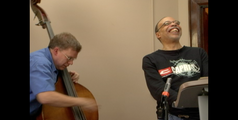"The Greatest Jazz Concert Ever:" Pierre Bourdieu and the Shifting Ontology of Bebop
Mark T. Laver
Published: 2009-12-05
On May 15, 1953, Toronto’s Massey Hall played host to what has become widely known in text books and collectors guides as “The Greatest Jazz Concert Ever.” The concert featured iconic bebop musicians Charlie Parker, Dizzy Gillespie, Bud Powell, Charles Mingus, and Max Roach – a stunning assemblage of musicians whom Downbeat Magazine proclaimed to be the “Quintet of the Year.” Curiously, however, the contemporary critical reaction was decidedly lukewarm. According to 1950s Globe and Mail critic Alex Barris, for instance, “All in all, it was neither a great concert nor a bad one.” How, then, has such an apparently pedestrian event come to be known as the “greatest jazz concert ever”?
This paper pursues an answer to that question by drawing on the socially-grounded aesthetic theorization of Pierre Bourdieu to help unpack the complex web of social and textual factors involved in the aesthetic valorization of the bebop. In the first section, I establish the theoretical framework, briefly explaining those elements of Bourdieu’s terminology and theory that are most germane to my study. In the second section, I apply Bourdieu’s concept of consecration to examine how music journalists, critics, and scholars discursively constructed bebop as a high art form. In the third section, I consider the musicians’ own effort to affirm their high art credentials. In the fourth and final section, I interrogate the consequences of the valorization of a primarily black music according to the aesthetic terminology and values of a primarily white establishment.
Available Files
-
Critical_Discourse_European_Aesthetics_Legitimization_of_Jazz.pdf
Download


